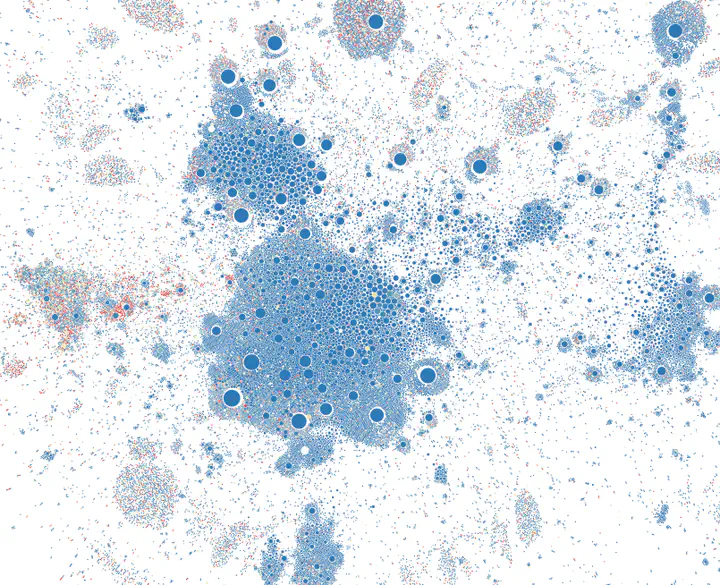What makes a bot a bot? Exploring benign automation on Twitter
 Detail of follow network with automation probabilities represented by colour from blue (0) to red (1).
Detail of follow network with automation probabilities represented by colour from blue (0) to red (1).Abstract
We present a study on bot detection and its interpretation by assessing the different types of automation that one of the most popular methods for bot detection, Botometer (https://botometer.iuni.iu.edu/), detects. The study is based on the first project to assess the prevalence, influence, and roles of automated accounts in a Twitter follow network on a national scale: the German-speaking Twittersphere. This work in progress allows us to analyse the long-term structural role, impact, and possible audience of bots beyond the context of single events and topics.
References
Davis, C. A., Varol, O., Ferrara, E., Flammini, A., & Menczer, F. (2016). BotOrNot: A System to Evaluate Social Bots. In Proceedings of the 25th International Conference Companion on World Wide Web, 273–274. https://doi.org/10.1145/2872518.2889302
Salamanos, N., Voudigari, E., & Yannakoudakis, E. J. (2017). A graph exploration method for identifying influential spreaders in complex networks. Applied Network Science, 2(1), 26. https://doi.org/10.1007/s41109-017-0047-y
Varol, O., Ferrara, E., Davis, C. A., Menczer, F., & Flammini, A. (2017). Online Human-Bot Interactions: Detection, Estimation, and Characterization. International AAAI Conference on Web and Social Media. Retrieved from https://aaai.org/ocs/index.php/ICWSM/ICWSM17/paper/view/15587/14817